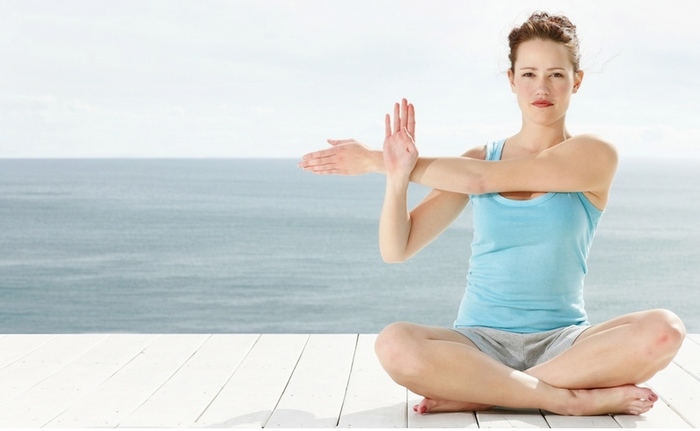|
Benefits of Fresh Juicing Whole fruit or juice Did you know that 95% of the vitamins and enzymes our bodies need are found in the juice of raw fruits and vegetables? We would need to eat 2 lbs of carrots, 10-12 apples, or 8 lbs of spinach to get the same amount of nutrients you receive in one 16 oz juice. When you drink juice, highly concentrated vitamins, minerals and enzymes rapidly enter the bloodstream absorbing all of the nutritional benefits of the fruits and vegetables and giving your digestive organs a much-needed rest. When to juice We think it’s best to drink our juices the same day they are pressed. As soon as any juice meets the air it begins to oxidize, compromising its nutritional value. However, storing our full juices in the refrigerator in a tightly sealed glass jar slows this process. The best time to drink juice is on an empty stomach or at least an hour before eating a meal. This maximizes the amount of nutrients absorbed into the body. Of course, fresh pressed juice is still loaded with health benefits even if you can’t drink it during the recommended window. Juicing and Illness There is lots of research that shows the healing properties of juicing. Not only will juicing facilitate weight loss, increased energy levels, strengthened immunity, strong bones and a glowing complexion, it may also reduce chances of heart disease, cancer and strokes, three of the leading causes of death. A growing body of research suggests that most vitamin supplements don’t help prevent chronic disease. A synthetic vitamin or mineral is a laboratory simulation of the real thing. Natural, plant-based vitamins and minerals are more easily and completely absorbed by the body. Fresh vs Bottled Fresh juice not only contains greater nutritional value, it contains life. Fresh pressed juice is like drinking a natural vitamin filled with living enzymes, essential minerals, antioxidants, and natural antibiotics, which are vital for optimal health. Bottled juices are pasteurized which means they are heated and processed, which can kill vitamins and minerals. Why organic Organic farming use methods that minimize the use of toxins while building soil quality and protecting water quality. Additionally, buying organic supports chemical and pesticide-free practices that are healthier for our farmers and for our planet. Courtesy of Living Greens.
0 Comments
The Balance Of Yin Yoga and Yang Yoga
Yin yoga targets entirely different parts of the body than yang yoga. A complete asana exercise consists of both parts Yin yoga was first developed by Paulie Zink when he combined the practice of Indian Hatha yoga with Chinese Taoist traditions. He utilized combinations of postures and movements with visualizations, vocalizations and other insights that he personally developed since beginning yoga when he was fourteen years old. He studied Taoist yoga, Qigong and Kung Fu for many years before he began teaching his own techniques. To understand yin and yang yoga poses, one must first understand how yoga is generally practiced. Yoga is not a form of competitive exercise. Each student progresses at his/her own level with each posture targeting a different area. While all yoga has similar goals and objectives, the traditional yoga practiced in North America is typically Yang Yoga. It usually targets the muscles with aggressive stretching postures and breathing exercises. Yin Yoga is the counterbalance to the practice of Yang Yoga, and is sometimes referred to as yoga for the joints. What does that mean? This yoga form begins with relaxed muscles and targets the ligaments and joints that asana styles don't normally exercise. Sometimes it is also referred to as soft yoga even though it can be more challenging than some yang poses. It involves postures that are held for longer periods of time than yang yoga. Some poses are held for up to 20 minutes. This stretches and strengthens connective tissues that are much deeper than superficial or muscular tissues. Yin and Yang tissues are affected much differently with each style. Yang is considered more dynamic, because it stretches and strengthens muscular tissues with an emphasis on internal heating. Yin focuses on the connections in the pelvis, hips, and even the lower spine. Most yang postures involve standing while most yin postures involve sitting or laying down. Many yoga masters feel the combination of yin and yang poses balance each other out and give the body the full exercise it truly needs. It is even suggested that practicing only the Yang side of yoga is only half of the asana practice. Yin yoga encompasses all skill levels, just like yang yoga. Beginners, intermediate and advanced yoga practitioners can all find postures that are at their level. The real challenge isn't deciding which one is best to do. It's how to achieve both to create a balance for the mind, body and spirit. Yoga masters seeking liberation, or moksa, do not practice only one side. courtesy of yoga.com |
AuthorYOGA SKIES Archives
January 2020
Categories |


 RSS Feed
RSS Feed